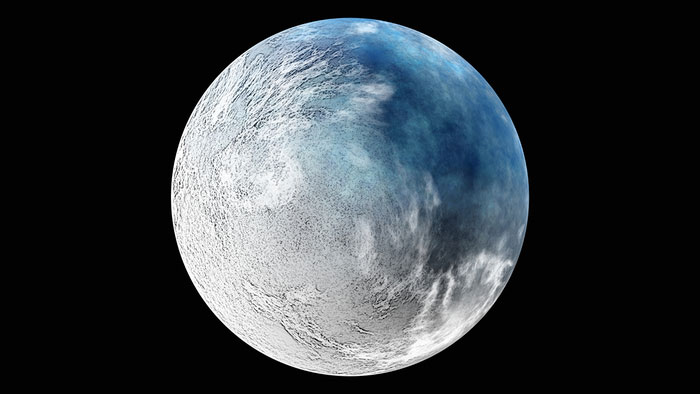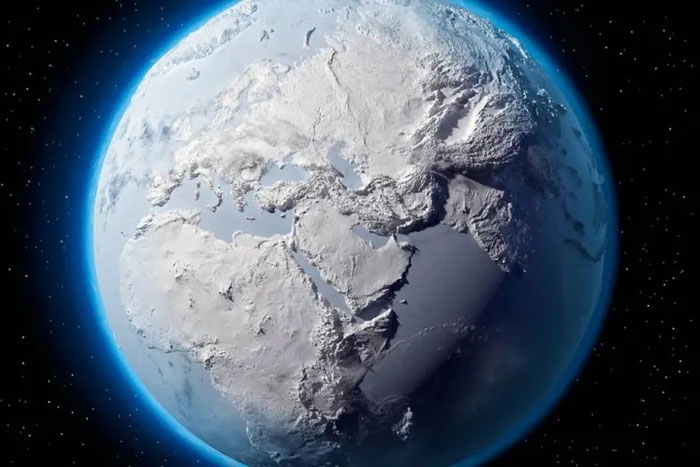If the Earth’s axis of rotation is no longer tilted, the 4 seasons will also follow and be eliminated. When considered scientifically and seriously, this will certainly be a disaster for the entire ecosystem on our planet.
If the Earth’s axis of rotation were not tilted (that is, the angle between the Earth’s axis and the ecliptic plane became 90 degrees), our planet would indeed not have the seasons as it does now.
Many would assume that the amount of sunshine at the same latitude is fixed throughout the year and that the temperature fluctuations from cold to hot will disappear. Some high-latitude areas will always have cold winters, and the tropics will always be as hot as summers, while mid- and low-latitude areas will experience spring-like weather year-round.
However, when viewed scientifically, this will bring about a prolonged “ice age”, possibly even directly destroying human civilization.

At the beginning of this disaster of millions of years, if human civilization has not yet developed to the stage of star colonization, there is a high probability that human civilization will perish. Only a few tenacious single-celled organisms can survive on Earth with such low temperatures. This is similar to the environment on Earth millions of years ago
At the beginning of the last century, a Yugoslav scholar named Milankovitch theorized about the cause of the Quaternary Ice Age by analyzing the correlation between climate change and the variability of the parameters. Earth orbit.
Simply put, his hypothesis believes that the cause of ice ages is not how cold the winters are, but rather it has more to do with how summers are in high latitude regions of the hemisphere. Is the north cool or not?
We know that the tilt of the Earth’s axis varies from 22 degrees to 24.5 degrees over a period of 41,040 years. When the angle of inclination drops to 22 degrees, summers in the high latitudes of the northern hemisphere will be cool. Milankovich believes these are the perfect conditions to trigger a new ice age.

At the time, there was no evidence to strongly support this hypothesis. It was not until more than ten years after his death, that is, in the 1970s, that geologists were able to extract analytical samples from the deep sea floor and collect data on changes in ocean climate over the past decade. hundred thousand years.
Accordingly, Milankovitch’s conjecture was proved to be absolutely correct. The climate change cycle in China is essentially consistent with the Milankovitch cycle hypothesis , and it was not until the 1980s that the scientific community finally accepted this hypothesis.
And if a mysterious force keeps the Earth’s axis from tilting, it will lead to lower summer temperatures in the high latitudes of the northern hemisphere. According to Milankovitch’s theory, this situation will lead the Earth to the most intense ice age ever and probably never ending.

Almost all ecosystems are frozen, and a lot of life on our planet is wiped out.
According to Milankovitch’s theory, when the Earth is no longer tilted, the polar regions will begin to cool and form new ice sheets. When the ice sheet is thick enough, it will begin to spread outward.
Due to the high albedo of ice and snow (typically, the albedo of ice and snow is greater than 40%, and in extreme cases the albedo can reach 90%), it will reflect most Sunlight back into space.
Accordingly, the temperature of the Earth’s surface will continue to decrease, and this in turn contributes to the formation of more ice sheets. According to Indiana University research, when the Earth’s average albedo increases from 29% today to 80%, the average temperature of the Earth will drop from 15 degrees Celsius to minus 63 degrees Celsius.
As the ice sheet continues to rise, the height of the ice sheet will gradually increase to at least a few hundred meters. As the surface of the ice increases, the temperature will also become colder, which directly causes the icebergs to move towards the equator.
Over time, the area of the equator would become as cold as the poles are today. During the last ice age, sea level fell by 116 meters, but this time, the entire ocean will be completely covered in ice and snow, the Earth will turn from blue as it is now to ice white. snow.

Over time, the Earth’s lava core, along with the movement of plate tectonics, combined with the eruption of volcanic gases… Large amounts of carbon dioxide also accumulated in the atmosphere, and The greenhouse effect begins again.
In addition to factors from outer space such as asteroid impacts that can cause the Earth to change the tilt of its axis of rotation, only the greenhouse effect can eliminate this catastrophic freezing climate.
However, this requires a lot of carbon dioxide. But now that the Earth has turned into an icy planet, the activities of animals and plants will not be able to take place on a large scale, carbon dioxide is produced mainly thanks to the weathering of rocks. silicates, carbonates and volcanic activity.
Volcanic eruptions can continuously release carbon dioxide, but this process takes millions of years, combined with the help of the Sun, for our planet to slowly warm up again.
As this process begins, the ice and snow in the equator will gradually melt, exposing some of the soil, and the Earth’s albedo will drop slightly, giving a positive feedback to the warming of the gas. Queen.
